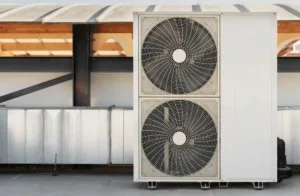Selecting between room air conditioners and central AC systems can impact your home’s comfort level and expenses. Homeowners often struggle with this decision as they search for effective cooling solutions or system upgrades. Multiple key factors determine the right choice such as available space, financial considerations, and specific cooling requirements.
Cooling Capacity
Single or Few Rooms
Room air conditioners are great at cooling specific areas. These compact units come with cooling capacities between 5,000 and 12,500 BTUs. A 6,000 BTU unit works perfectly for a standard bedroom while larger living spaces need up to 12,500 BTUs. Homeowners appreciate these units because they can cool selected rooms and save money.

Whole House Cooling
Sizing Considerations
AC unit sizing relies on multiple factors that go beyond just square footage.
To determine your space requirements for heating and cooling, you’ll need several key measurements and details. Start with the square footage of each room or your entire home, along with the height of your ceilings. Knowing the number and dimensions of windows also plays an important role as does understanding your specific climate zone. These factors together help you calculate the heating and cooling needs of your space accurately.| Home Size (sq ft) | Recommended AC Size |
| 1,200 – 1,500 | 2 – 2.5 tons |
| 1,500 – 2,000 | 2.5 – 3 tons |
| 2,000 – 2,500 | 3 – 3.5 tons |
Installation and Space Requirements
Window or Wall Installation
Room air conditioners can be installed in windows or mounted through walls. Window units require at least one foot of space on each side to ensure proper airflow. A professional must cut and frame the wall for through-the-wall installations and add weatherproofing protection against moisture damage. The AC unit performs best when installed on north or east-facing walls since direct sunlight can decrease its efficiency by up to 10%.
Outdoor Unit

Space Needed For Each Type
The two options have different space requirements!
| AC Type | Minimum Clearance | Additional Space Needs |
| Room AC | 1 foot all sides | Window/wall opening |
System performance depends on installation location. Central AC units deliver the best results in shaded spots away from heat-generating appliances. Room AC units need the right support and leveling to make sure drainage systems work effectively as well. Maintenance teams need easy access to both types, and installers must plan their placement accordingly..
Energy Efficiency and Cost
Original Purchase Costs

Operating Costs and Energy Usage
| AC Type | Monthly Operating Cost |
| Room AC | $19 – $55 |
| Central AC | $30 – $270 |
| Portable AC | $29 – $50 |
Long-Term Savings Potential
- System maintenance requirements
- Energy efficiency ratings
- Home size and cooling needs
- Local electricity rates
Comfort and Air Quality
Temperature Control

Humidity Removal Capabilities
Air Filtration Options
- Whole-house air circulation
- Compatible with HEPA filtration
- Options for UV air purification
- Reduced airborne contaminants
- Better control of seasonal allergies




